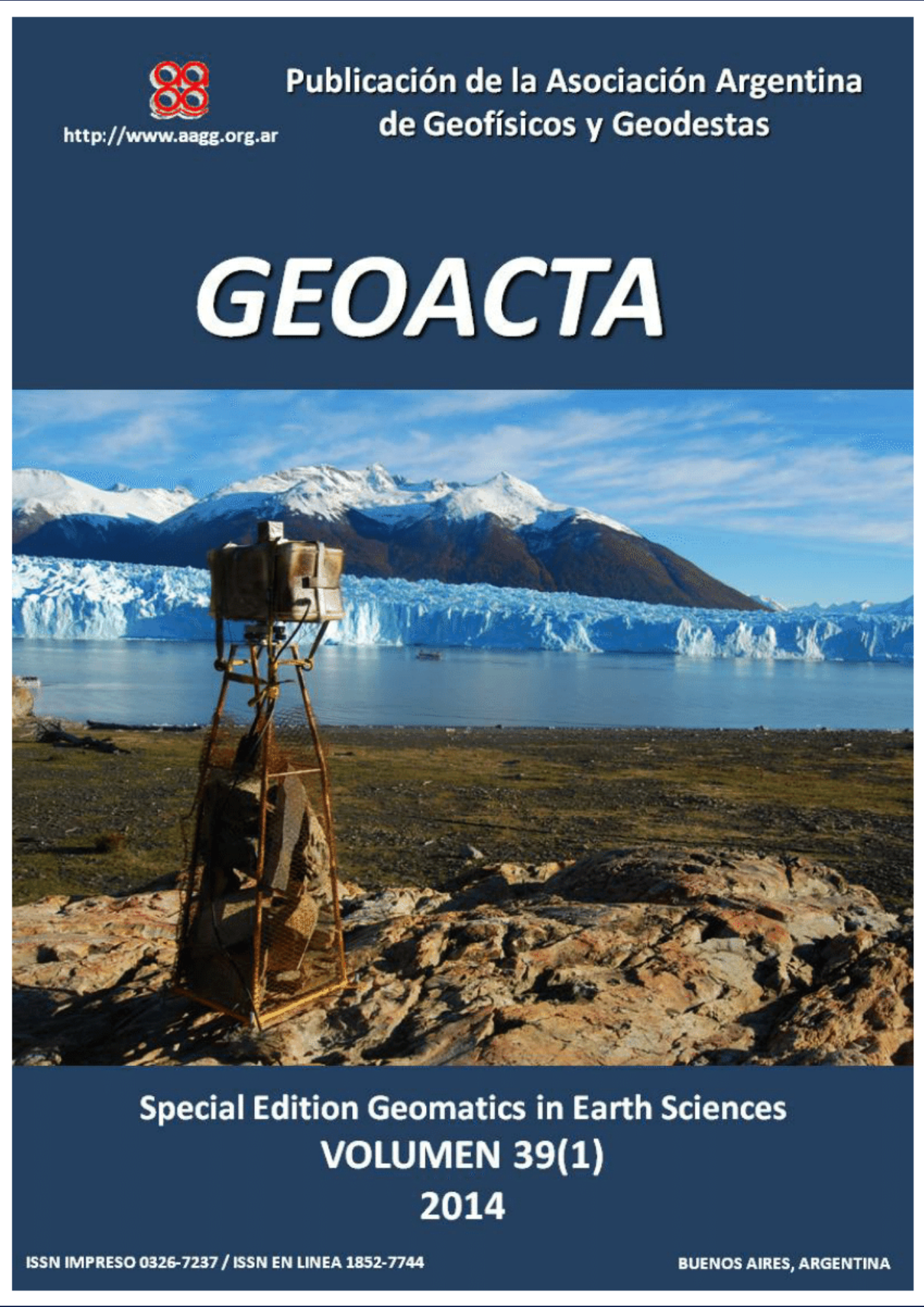Methodologies used in the digital climatic atlas of México for generating high-resolution maps
Keywords:
Climatic cartography, climatic variables, extreme climatology, meteorological drought, bioclimatic parametersAbstract
The methodologies used to generate the monthly, high spatial resolution (926 m) climate maps that are incorporated into the Digital Climatic Atlas of Mexico (abbreviated to ACDM in Spanish) are described. These include the processing of data from more than 5200 weather stations feeding the daily climatological database of the Mexican National Weather Service covering the period 1902-2011 together with data covering the period 1950-2000 from the WorldClim-Global Climate Database. The procedures developed to perform data quality control and to structure geo-referenced databases of climate variables, as well as the validation processes and the establishment of metadata and data visualization through cartographic compositions, are explained. The climatic variables included are: temperature, precipitation, absolute extreme values, bioclimatic parameters, and meteorological drought.
Downloads
References
Australian National University, (2012). Consultada en agosto de 2012. http://www.rforge.net/doc/packages/climates/html/bioclim.html.
Base climatológica diaria. Servicio Meteorológico Nacional, (2011). Comisión Nacional del Agua. Normales Climatológicas por Estación. México. http://smn.cna.gob.mx/index.php?option=com_content&view=article&id=42&Itemid=75.
Centro Nacional para la Prevención de Desastres (CENAPRED), (2013). Origen y características de las sequías. Sequía. Secretaría de Gobernación, México. Consultada en junio de 2013. http://www.cenapred.unam.mx/es/Investigacion/RHidrometeorologicos/FenomenosMeteorologicos/Sequia/.
Federal Geographic Data Committee, (2012). Consultada en agosto de 2012. México. http://www.fgdc.gov.
Fernández, E.A., Romero, C.R. y Zavala, H.J., (2012). Atlas Climático de México y Áreas Adyacentes. Volumen 1. Centro de Ciencias de la Atmósfera, Universidad Nacional Autónoma de México. Servicio Meteorológico Nacional, Comisión Nacional del Agua. http://atlasclimatico.unam.mx/ACM/
Fernández, E. A., Romero, C.R. y Zavala, H.J., (2013). Atlas Climático Digital de México. Centro de Ciencias de la Atmósfera, Universidad Nacional Autónoma de México. http://uniatmos.atmosfera.unam.mx
García, F.F.O. y Matías L.G., (2002). Sequías. Centro Nacional para la Prevención de Desastres (CENAPRED). Serie Fasciculos. http://www.proteccioncivil.gob.mx/work/models/ProteccionCivil/Resource/372/1/images/fasciculo_sequias.pdf.
Hijmans R.J., Cameron, S.E., Parra, J.L., Jones, P.G., Jarvis, A., (2005). Very high resolution interpolated climate surfaces for global land areas. International Journal of Climatology, 25: 1965-1978.
Rivas, M.S., (2002). Clasificación bioclimática de la Tierra. Worldwide Bioclimatic Classification System. http://www.globalbioclimatics.org/book/bioc/global_bioclimatics_2.htm
Shuttle Radar Topography Mission, (2005). http://www2.jpl.nasa.gov/srtm/
Unidad de Informática para las Ciencias Atmosféricas y Ambientales (UNIATMOS), (2013). Centro de Ciencias de la Atmósfera. Universidad Nacional Autónoma de México.http://www.atmosfera.unam.mx/
Downloads
Published
How to Cite
Issue
Section
License
Copyright (c) 2014 Agustín Fernández Eguiarte, Rosario Romero Centeno, Jorge Zavala Hidalgo

This work is licensed under a Creative Commons Attribution-NonCommercial-ShareAlike 4.0 International License.
Starting in 2022 (Vol. 43 number 2) articles will be published in the journal under a Creative Commons Attribution-NonCommercial-ShareAlike 4.0 International license (CC BY-NC-SA 4.0)
According to these terms, the material can be shared (copied and redistributed in any medium or format) and adapted (remixed, transformed and created from the material another work), provided that a) the authorship and the original source of its publication (journal and URL of the work), b) is not used for commercial purposes and c) the same license terms are maintained.
Prior to this date the articles were published in the journal under a Creative Commons Attribution license (CC BY)
In both cases, the acceptance of the originals by the journal implies the non-exclusive assignment of the economic rights of the authors in favor of the editor, who allows reuse, after editing (postprint), under the license that corresponds according to the edition.
Such assignment means, on the one hand, that after its publication (postprint) in the GEOACTA Magazine of the Association of Geophysicists and Geodesists, the authors can publish their work in any language, medium and format (in such cases, it is requested that it be recorded that the material was originally published in this journal); on the other, the authorization of the authors for the work to be harvested by SEDICI, the institutional repository of the National University of La Plata, and to be disseminated in the databases that the editorial team considers appropriate to increase visibility. of the publication and its authors.
Likewise, the journal encourages the authors so that after their publication in the Journal of the Association of Geophysicists and Geodesists, they deposit their productions in other institutional and thematic repositories, under the principle that offering society scientific production and Unrestricted academic scholarship contributes to a greater exchange of global knowledge.
















